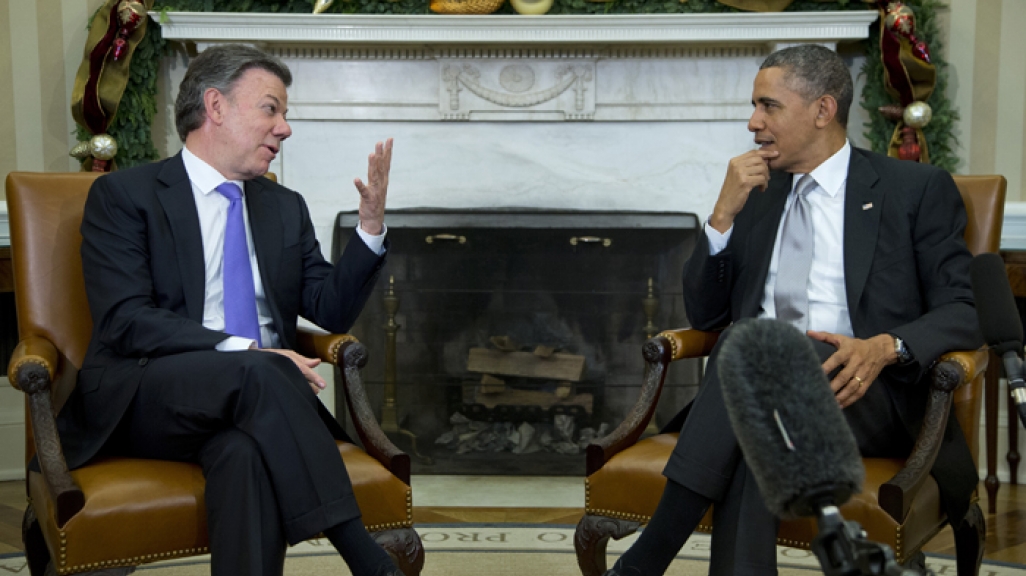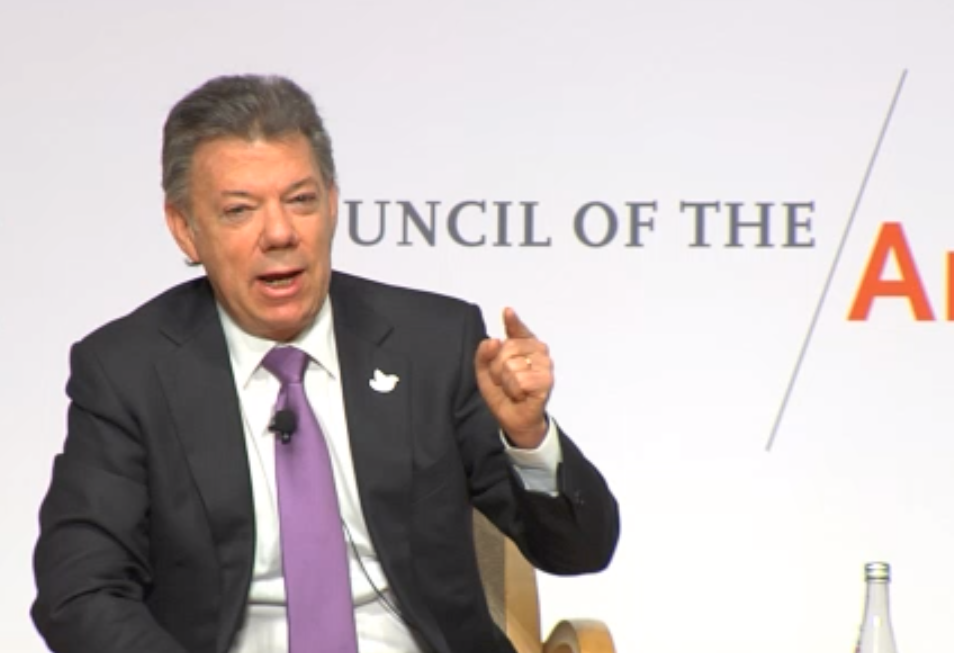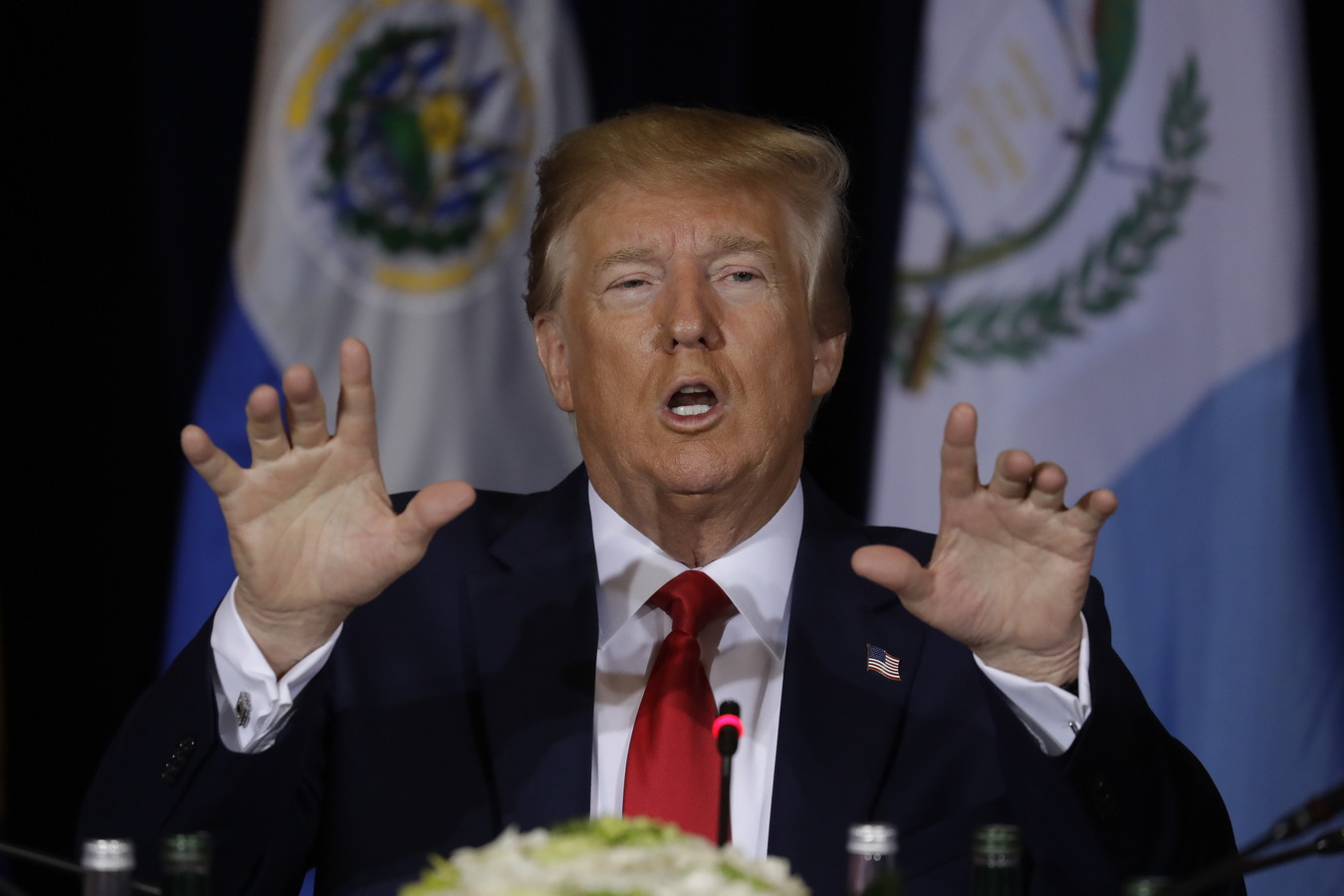Colombia Update: President Santos' Visit to Washington
Colombia Update: President Santos' Visit to Washington
The Colombian president will ask the United States to shift toward implementing a peace agreement with the FARC.
Updated — Colombian President Juan Manuel Santos arrives February 3 in Washington to meet with U.S. President Barack Obama and several key figures on Capitol Hill. Although the official reason for the visit is to celebrate the fifteenth anniversary of Plan Colombia—a binational effort to fight drug cartels and bolster state institutions in the South American country—media reports suggest that the president will seek support for the country’s peace talks with the Revolutionary Armed Forces of Colombia (FARC) and post-conflict plans. March 23 is the deadline for the peace deal. The White House also said the Obama administration hopes to discuss “a shared vision for future collaboration in the event of an historic peace agreement.”
Santos will not travel by himself: Ministers María Ángela Holguín (Foreign Relations), Mauricio Cárdenas (Finance), Juan Fernando Cristo (Interior), Cecilia Álvarez-Correa (Commerce), and Rafael Pardo (Post-conflict) will fly to Washington with him, along with top military brass.
Building on Plan Colombia
This visit could be decisive for Santos’ plans—and budget—in the upcoming year. The United States is Colombia’s biggest trade partner, and has sent just under $10 billion in aid through Plan Colombia from 2000 through 2016. At least 71 percent of that money has gone to military and police operations, though in 2016 that figure will drop to 52 percent.
Since the inception of the plan, annual homicides in Colombia decreased 56 percent from 28,837 in 2002 to 12,673 in 2015. In the same period, the number of victims of mass killings (four or more deaths per incident) went down 92 percent from 680 to 54, and kidnappings dropped 93 percent— from 2,882 to 210.
Vice President Joe Biden, who was at the helm of the Senate Foreign Relations Committee during much of the 2000s, praised Plan Colombia’s achievements in The New York Times in July, and said it served as a model for the region.
At an event on February 3 in Washington, DC that was co-sponsored by AS/COA, Santos praised Plan Colombia's “comprehensive approach,” as it helped to train troops, strengthen the judicial system, and foster social development.
Santos Suggests a Shift
Santos is looking for a shift in focus of U.S. foreign policy toward Colombia after a peace deal is struck. “Plan Colombia 2.0” would center on landmine removal, reintegration of demobilized combatants, and land restitution. The United States Agency for International Development (USAID) would increase its presence in the country to help with social programs in remote areas. Also, the U.S. military would advise on infrastructure building in areas most affected by conflict, and on creating programs to replace illegal crops. Also at the February 3 event, Santos said Colombia will look for support from the United States for developing post-conflict education, security, and health programs.
Funding Hurdles
That pivot in policy could run into obstacles. The most recent U.S. omnibus budget, passed in December 2015, specifies that funds allocated to Colombia be for counternarcotics operations, and fighting foreign terrorist organizations, of which the FARC is one.
In a January 28 interview with the Associated Press, Santos said he will ask for the FARC to be taken off the list of foreign terrorist organizations and that the United States suspend outstanding warrants it has for guerilla leaders—both requests of FARC negotiators in Havana. But Bernard Aronson, the top U.S. diplomat at the Havana peace talks, told El Tiempo on February 1 that the FARC will remain on the terrorist list until disarmed. The budget additionally allocates $3 million to Colombia and four other nations for forensic anthropology assistance to identify war crime victims.
A resolution in support of the Colombia peace process, with five cosponsors, is currently before the House Committee on Foreign Affairs.
Santos has a tight agenda to convince the United States of this new strategy. On February 3, he will meet with House Speaker Paul Ryan (R-WI). The next day, the president will meet with Biden, followed by Senate leaders Mitch McConnell (R-KY) and Harry Reid (D-NV), and then with Obama at the White House. On Friday, Santos sits down with Secretary of State John Kerry.
Trade on the Table, Budgets on the Butcher’s Block
Santos’ visit also comes amid challenging economic times. Falling oil prices are driving the Colombian peso—down 30 percent of its value since last year—to record lows against the dollar. The country is facing $9.1 billion in lost oil revenues in 2016, according to Cárdenas, who’s in the middle of implementing austerity measures.
In May, the two countries will celebrate the third anniversary of the U.S.-Colombia Trade Promotion Agreement, which, incidentally, Kerry, McConnell, and Ryan all voted in favor of. Last week, the countries agreed to reduce tariffs on U.S. beef exports to Colombia.










